Lighting plays a pivotal role in interior design, shaping the ambiance, mood, and functionality of a space. From the early days of candlelight to the modern, energy-efficient LED bulbs, the history of interior lighting is rich and diverse. In this article, we’ll explore the evolution of lighting, the various styles and types of lights available, light shade shapes and styles, materials used in lighting design, the importance of tools like up and downlighters and dimmers and the dos and don’ts when purchasing lighting.
A Brief History of Interior Lighting:
The history of interior lighting dates back to ancient times when early civilizations relied on natural light sources such as fire and sunlight. In ancient Rome and Greece, homes featured courtyards to maximize daylight, and candles made of tallow or beeswax were used for artificial lighting. The Middle Ages saw the advent of more elaborate candle chandeliers in castles and monasteries.
The 19th century marked a significant shift with the invention of the gas lamp, followed by Thomas Edison’s groundbreaking introduction of the incandescent light bulb in the late 1800s. This innovation revolutionized interior lighting, making it more accessible to the general population and paving the way for further advancements in lighting design.
Styles and Types of Lights:
Today, interior designers have a plethora of lighting options at their disposal, ranging from traditional fixtures to cutting-edge technologies. Here are some popular styles and types of lights:

Chandeliers: A timeless choice, chandeliers are elaborate hanging fixtures that can serve as a focal point in a room. They come in various styles, from classic crystal designs to modern, minimalist versions.

Pendant Lights: Suspended from the ceiling, pendant lights offer a versatile and stylish solution for task and ambient lighting. They come in a variety of shapes, sizes, and materials, allowing for customization to suit any interior design.

Wall Sconces: Mounted on walls, sconces provide both functional and decorative lighting. They are available in diverse styles, ranging from traditional to contemporary, and can be used to highlight architectural features or create a specific atmosphere.

Floor and Table Lamps: These portable lighting options are ideal for adding flexibility to a space. Floor lamps can illuminate dark corners, while table lamps serve as functional and aesthetic additions to side tables and desks.

Track Lighting: Versatile and adjustable, track lighting consists of a track system with movable fixtures. It’s an excellent choice for highlighting specific areas or artworks in a room, providing flexibility in directing light precisely where it’s needed.

Recessed Lighting: Also known as can lights or downlights, recessed lighting is installed flush with the ceiling. It offers a clean and unobtrusive look, making it ideal for contemporary designs. Recessed lights are commonly used for ambient lighting and can be strategically placed to illuminate entire spaces.

Cove Lighting: Cove lighting involves placing fixtures in ledges, recesses, or valences to direct light upward, creating an indirect and ambient illumination. It’s a subtle and elegant option often used to highlight architectural details, such as crown molding or tray ceilings.

Under-Cabinet Lighting: Practical and visually appealing, under-cabinet lighting is installed beneath kitchen cabinets to illuminate countertops. LED strips or puck lights are popular choices, providing both task lighting and a touch of sophistication to kitchen spaces.

String Lights: Ideal for adding a whimsical or festive touch, string lights are versatile and can be used indoors or outdoors. They come in various shapes and sizes, from traditional incandescent bulbs to energy-efficient LED variations, providing a charming and cosy atmosphere.

Flush Mounts and Semi-Flush Mounts: These fixtures are mounted directly against the ceiling (flush mounts) or hang slightly below it (semi-flush mounts). They are practical choices for rooms with lower ceilings and come in a range of styles, from classic to contemporary.

Picture Lights: Specifically designed to illuminate artwork, picture lights are mounted on the wall or ceiling to highlight paintings, photographs, or other focal points. They often feature adjustable arms or heads for precise aiming.

Neon Lights: A bold and contemporary choice, neon lights have made a comeback in interior design. They offer a vibrant and customizable option for creating eye-catching statements, from minimalist signage to artistic installations.
Light shade shapes and styles:
Light shade shapes and styles contribute significantly to the overall aesthetic of interior spaces. The design of light shades can range from classic and elegant to modern and avant-garde. Here’s a closer look at various light shade shapes and styles:
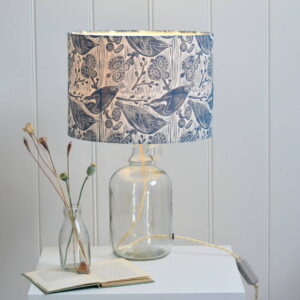
Drum Shades: Drum shades are cylindrical in shape and feature a straight vertical design. They offer a clean and contemporary look, making them versatile enough to suit a variety of interiors. Drum shades can be made from fabric, metal, or even natural materials like rattan.
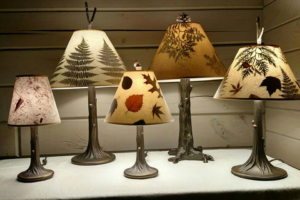
Cone Shades: Cone-shaped shades taper from the top to the bottom, directing light in a focused manner. This style is often associated with mid-century modern designs. Cone shades are popular choices for pendant lights and wall sconces.

Bell or Trumpet Shades: Resembling an inverted bell or trumpet, these shades are wider at the opening and gradually narrow toward the bottom. Bell shades exude a classic and timeless elegance, often found in traditional or vintage-inspired lighting fixtures.

Empire Shades: Empire shades have a distinctive silhouette with a small top opening that gradually widens toward the bottom. This timeless shape is often associated with chandeliers and table lamps, adding a touch of sophistication to formal spaces.

Rectangular or Square Shades: Breaking away from traditional circular designs, rectangular or square shades provide a modern and geometric aesthetic. They are commonly used in pendant lights and can add a contemporary edge to the overall design.
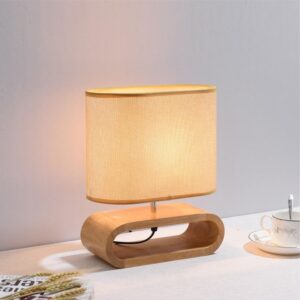
Oval Shades: Oval shades offer a softer and more organic alternative to traditional round shapes. This style is often chosen for pendant lights or chandeliers, adding visual interest and breaking away from conventional symmetrical designs.
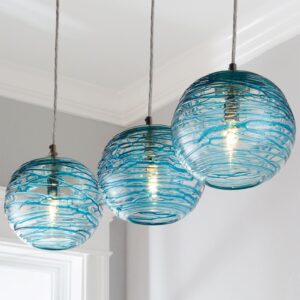
Globe Shades: Globe shades are spherical or semi-spherical and provide a diffused and even distribution of light. They are commonly used in pendant lights and floor lamps, offering a timeless and versatile option for various design styles.
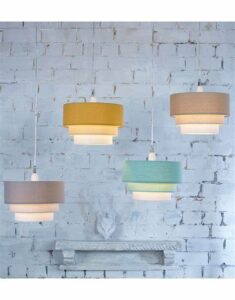
Multi-Layered or Tiered Shades: Multi-layered or tiered shades add depth and complexity to a light fixture. This style is often seen in chandeliers, creating a cascading effect that enhances visual interest and complements larger spaces.

Lantern Shades: Inspired by traditional lanterns, these shades often feature intricate patterns and materials like metal or glass. Lantern shades are commonly used in pendant lights and can add a touch of exotic or vintage charm to a space.

Mushroom Shades: Characterized by a wide, shallow profile, mushroom shades provide a broad and even distribution of light. They are commonly found in ceiling fixtures and floor lamps, offering functional illumination with a subtle design.

Open Cage or Geometric Wire Shades: Featuring an open framework, these shades use geometric patterns or wire structures. This style adds an industrial or modern touch to the lighting fixture, allowing light to interact with the surrounding space.
Materials used in Lighting Designs:
The materials used in lighting fixtures contribute to their overall aesthetic and can complement the design of a space. Common materials include:

Metal: Brass, copper, and chrome are popular choices for contemporary and industrial lighting designs, offering durability and a sleek finish.

Glass: Transparent, coloured, or textured glass shades add sophistication to lighting fixtures. Stained glass can also be used for a more artistic and decorative touch.
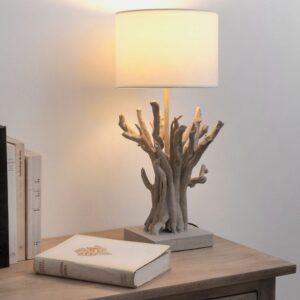
Wood: Wooden fixtures provide a warm and organic feel to a space. Wood is often incorporated into pendant lights, chandeliers, and even lamp bases.

Fabric: Lampshades made from various fabrics can soften and diffuse light, creating a cosy and inviting atmosphere.
Up and Downlighters, and Dimmers:
Effective lighting design goes beyond choosing the right fixtures; it involves strategic placement and control mechanisms. Here are two essential tools in lighting design:
Up and Downlighters: These fixtures direct light either upward or downward, creating unique effects on walls, ceilings, or specific objects. Up-lighting can highlight architectural features, while downlighting is effective for task lighting or creating an intimate atmosphere.
Dimmers: Dimmer switches allow users to adjust the brightness of a light fixture, providing flexibility in setting the mood for different occasions. Dimming capabilities are particularly useful in dining rooms, bedrooms, and living spaces.
The Dos and Don’ts when purchasing lighting:
Selecting the right lighting for your space is crucial to achieving the desired ambiance and functionality. Here are some dos and don’ts to consider when purchasing lighting:
Do:
Consider the Purpose: Identify the purpose of the lighting in each space. Whether it’s ambient, task, or accent lighting, understanding the function will guide your choices.
Create a Lighting Plan: Develop a comprehensive lighting plan for your entire space. Combine various types of lighting to address different needs and enhance the overall design.
Match Style to Décor: Coordinate the style of the lighting fixtures with the overall design aesthetic of the room. This ensures a cohesive and harmonious look.
Pay Attention to Scale: Choose fixtures that are proportionate to the size of the room and its furnishings. Avoid oversized or undersized fixtures that can disrupt the visual balance.
Layer Lighting: Implement a layered lighting approach. Combine ambient, task, and accent lighting to create depth and flexibility in illuminating different areas.
Consider Bulb Temperature: Pay attention to the colour temperature of the bulbs. Warmer tones (around 2700K) are suitable for cosy spaces, while cooler tones (around 4000K) work well in task-oriented areas.
Test Light Bulbs: Test different light bulbs to see how they interact with your chosen fixtures. Factors like brightness and colour can vary, so it’s essential to find the right combination.
Utilize Dimmers: Install dimmer switches wherever possible. They offer control over the intensity of light, allowing you to adjust according to the time of day or specific activities.
Consider Energy Efficiency: Opt for energy-efficient lighting options, such as LED bulbs. They not only reduce energy consumption but also have a longer lifespan, minimizing the need for frequent replacements.
Think About Maintenance: Consider the maintenance requirements of the chosen fixtures. Some intricate designs may be more challenging to clean, so factor in practicality along with aesthetics.
Don’t:
Overlook Natural Light: Forget to consider natural light sources. Balance artificial lighting with natural light to create a comfortable and well-lit environment.
Stick to a Single Light Source: Rely solely on a single light source in a room. Experiment with multiple fixtures to provide adequate and flexible illumination.
Ignore Colour Rendering: Overlook the colour rendering index (CRI) of light bulbs. A high CRI ensures accurate colour representation, vital for spaces like kitchens and dressing areas.
Forget About Flexibility: Neglect the importance of adaptable lighting. Ensure that fixtures offer flexibility through adjustable heads, dimmers, or other control features.
Underestimate Task Lighting: Underestimate the importance of task lighting in areas like kitchens, offices, or reading nooks. Insufficient task lighting can lead to eye strain and discomfort.
Neglect Lighting Placement: Forget to carefully consider the placement of fixtures. Ensure that lighting is evenly distributed and strategically positioned to avoid shadows and glare.
Disregard Style Consistency: Mix too many disparate styles in a single space. While some contrast is interesting, maintaining a level of consistency ensures a cohesive design.
Overlook Safety Standards: Compromise on safety standards. Ensure that lighting fixtures meet relevant safety regulations, especially in areas prone to moisture like bathrooms.
Disregard Maintenance: Choose fixtures that are overly complex or difficult to clean if you’re not prepared for the maintenance. Consider the practicality of cleaning and upkeep.
Forget to Test the Lighting at Night: Make final decisions about lighting solely during the daytime. Test the lighting in the evening to see how it influences the mood and atmosphere in your space.
Lighting in interior design is a dynamic and ever-evolving field that draws inspiration from the past while embracing modern technologies. By understanding the history, exploring various styles and types of lights, and incorporating innovative tools like up and downlighters and dimmers, designers can create spaces that are not only functional but also visually striking and harmonious. The right lighting design has the power to transform a room, enhancing its aesthetics and improving the overall quality of life for its occupants.




